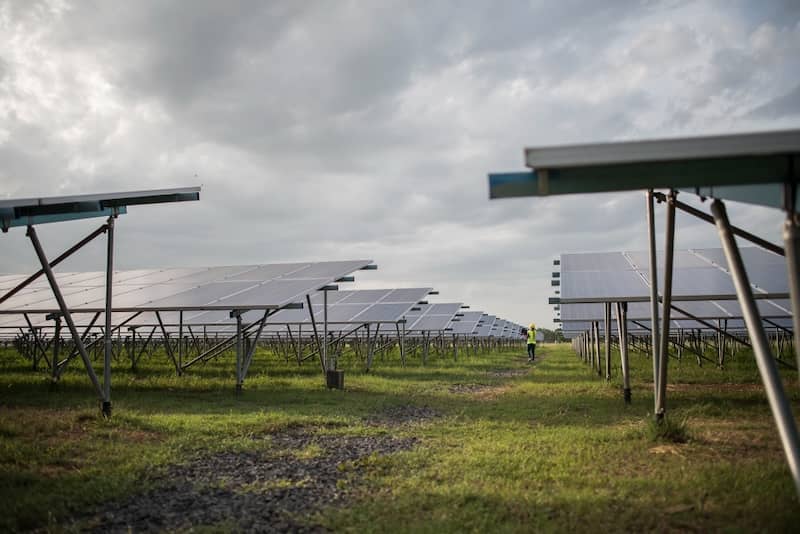How to create a strong sustainability strategy for your company and what part energy plays in it
26 June 2023
According to the Sustainability Action Report: Survey Findings on ESG Disclosure and Preparedness published by Deloitte, most business leaders believe that sustainability is essential. It is even more inspiring to learn that almost every respondent was committed to investing in new technologies and other tools in 2024. Still, many face challenges when implementing strategies, mostly because a widespread misconception makes leaders treat sustainability as an added layer, not the heart of operations.
However, for your sustainability strategy to bring significant lasting results it should be integrated into all aspects of your business, from operations to HR and marketing. In this article, you’ll learn the basics of a strong strategy that can be easily implemented and where renewable energy comes into play.
Covering the basics: the benefits and pillars of a sustainability strategy
While sustainable goals and ESG reporting are crucial topics, we’re far from the reality where this information is measured and reported in a unified way across organizations, industries, and countries. Still, a future where sustainability reporting is as critical and rigorous as financial reporting is more than feasible. If you don’t know whether it should be a priority for your company, here are the main benefits of a robust strategy focused on major environmentally-oriented goals:
- Provide a common goal for teams across your organization
- Drive resources and budgets into prioritized areas
- Engage external stakeholders in a meaningful way
- Provide a blueprint to achieve ambitious goals
- Meet the demand from investors, consumers, and regulators
- Future-proof your business in the face of changing conditions
But before developing this strategy, the most important thing companies and business leaders should understand about corporate social responsibility and sustainability is that once you choose the framework relevant to your unique situation, everything else will follow.
Whether you choose the UN SDGs as the guiding principles or you have specific regulations in your industry, remember that the three pillars of sustainability remain the same: the environmental, often referred to as the “Planet” pillar; the social, also called the “People” pillar, and the economic, or the “Profit” pillar. For every pillar, there is a set of steps and solutions you can implement to make a better impact as a company, for instance, improving your community engagement or total rewards strategy for the People component.
While developing a well-rounded strategy is demanding and will require efforts from all teams across the organization, one area deserves special attention as it can positively affect all three pillars simultaneously. Let’s take a closer look at where renewable energy comes into play and how smart decisions can help you achieve a triple-bottom-line impact and true progress toward sustainability.

The role of renewable energy in achieving sustainable growth
Energy management takes one of the central places under the umbrella of sustainable goals. You can look at it as a strategy of its own, the purpose of which is to achieve efficiency, conservation, and transition to cleaner renewable energy. Here are the major focus areas that can help you move to achieve ambitious goals by reviewing and getting strategic about your relationship with energy:
- Reduce environmental damage, i.e. harm less. While many people consider the 2035 carbon-neutral goals too ambitious and almost unachievable, having a clear energy management strategy in place can help your company identify which steps to take and what impact each step will have. For example, switching to a new energy provider that offers a renewable energy plan can be the first milestone.
- Decrease consumption, i.e. use less. The energy systems we rely on in our daily lives and business operations are often not as efficient as they could be. Today, when everything from lighting and HVAC to security and building controls can be improved with recent technological advancements, it’s impossible not to find a way to use less energy. According to the US Department of Energy, HVAC systems use about 35% of a building’s energy, and a step as easy as retrofitting the old system can help reduce consumption significantly, and these can often be financed or leased, making the upgrade immediately accretive financially and from a carbon perspective.
- Cut energy costs, i.e. spend less. Over the past couple of years, energy markets have been extremely volatile. We’ve already seen significant increases in fossil fuel costs, which will likely keep increasing. Including renewable energy sources in your operations can bring more budget stability and predictability and reduce your monthly energy costs.
- Healthier team members and communities. While the direct connection between health and energy might not be so obvious, it’s there. Indoor air quality is one of the indicators that can be improved drastically with upgrades to the HVAC system, for example. Besides, reducing our systemic reliance on coal, oil and gas, paired with introducing energy-saving technologies, has a tremendous effect on the shared environment, which equates to a better quality of life for all members of our communities.

The landscape of renewable energy in Canada and the US
With the variety of renewable energy sources available and numerous pros and cons for each kind, industries approach renewable energy from different perspectives based on their level of consumption, technical requirements, budgets and goals.
One of the largest consumers of energy in the world, the manufacturing sector, has been exploring renewable energy and how it can help reach ambitious sustainability goals for a while, and as a result, multiple companies in this industry rely on wind, solar, biomass, green hydrogen, and geothermal energy to power their operations.
Very often, business leaders mistakenly believe that solar power will not be beneficial for them due to their geographic location, thinking that it only makes sense in southern regions. However, it’s possible to find a viable solution in every region.
In Canada, several manufacturing companies have implemented renewable energy projects. For example, the Toyota plant in Clarington, Ontario, has installed a solar system that generates 1145 MWh annually, providing for all the electrical needs of the building and carbon offsets needed on-site. Multiple solar, wind, and hydro projects are now in progress all over the country. The University of Alberta has developed a map that shows all renewable energy projects in Alberta.
In the United States, the Department of Energy’s Better Plants Program is working with manufacturers to improve energy efficiency and increase the use of renewable energy. As of 2021, over 270 industrial organizations have joined the program and have achieved cumulative energy savings of over 1.9 quadrillion BTUs (5.5 quadrillion mWh) or nine billion dollars.
Every industry has specific goals for including renewable energy as well as energy efficiency in sustainability and procurement strategies. For example, oil and gas companies are exploring renewable energy options to reduce their dependence on fossil fuels and decrease their environmental impact, agricultural companies are using clean energy to power their farms and reduce their carbon footprint, and property management companies aim to reduce their energy costs and attract environmentally-conscious tenants while meeting the demands of their other stakeholders. For example, a mixed-use development in Dubai has completed a LED lights retrofit project expected to save 700 MWh of energy annually.
The interest in renewable energy has also grown in non-profit organizations that aim to reduce their environmental impact and serve as an example for others and in First Nations communities that want to reduce their dependence on diesel generators and create a sustainable future.
Conclusion
In conclusion, sustainability is a crucial aspect of business strategy that every business leader and organization should prioritize. A strong sustainability plan not only provides a common goal for teams across the company but also drives resources and budgets into the most important areas, engages various internal and external stakeholders, and provides a blueprint to achieve ambitious goals.
Energy management is central to this sustainability plan, with measurable milestones that can help reduce environmental damage, decrease consumption, and cut energy costs. Adopting renewable energy as well as energy efficiency solutions has already proven to be effective in various industries. It is clear that a constant focus on ensuring sustainability is critical for all businesses, and those that prioritize it avoid falling behind and losing their competitive edge.
Others articles you might like
Microgrids: A key player in sustainable energy management
In recent years, Alberta’s renewable energy initiatives have made
9 July 20247 Factors to Consider When Choosing an Energy Provider for Your Business
From ski lodges and farming operations to retail stores and manufacturing companies, energy costs are a significant line item on your profit...
20 June 2024Understanding the differences: Residential vs commercial energy contracts
Energy is essential to the operation of both businesses and residential homes throughout Canada and the rest of the world. But, there are ma...
4 June 2024



